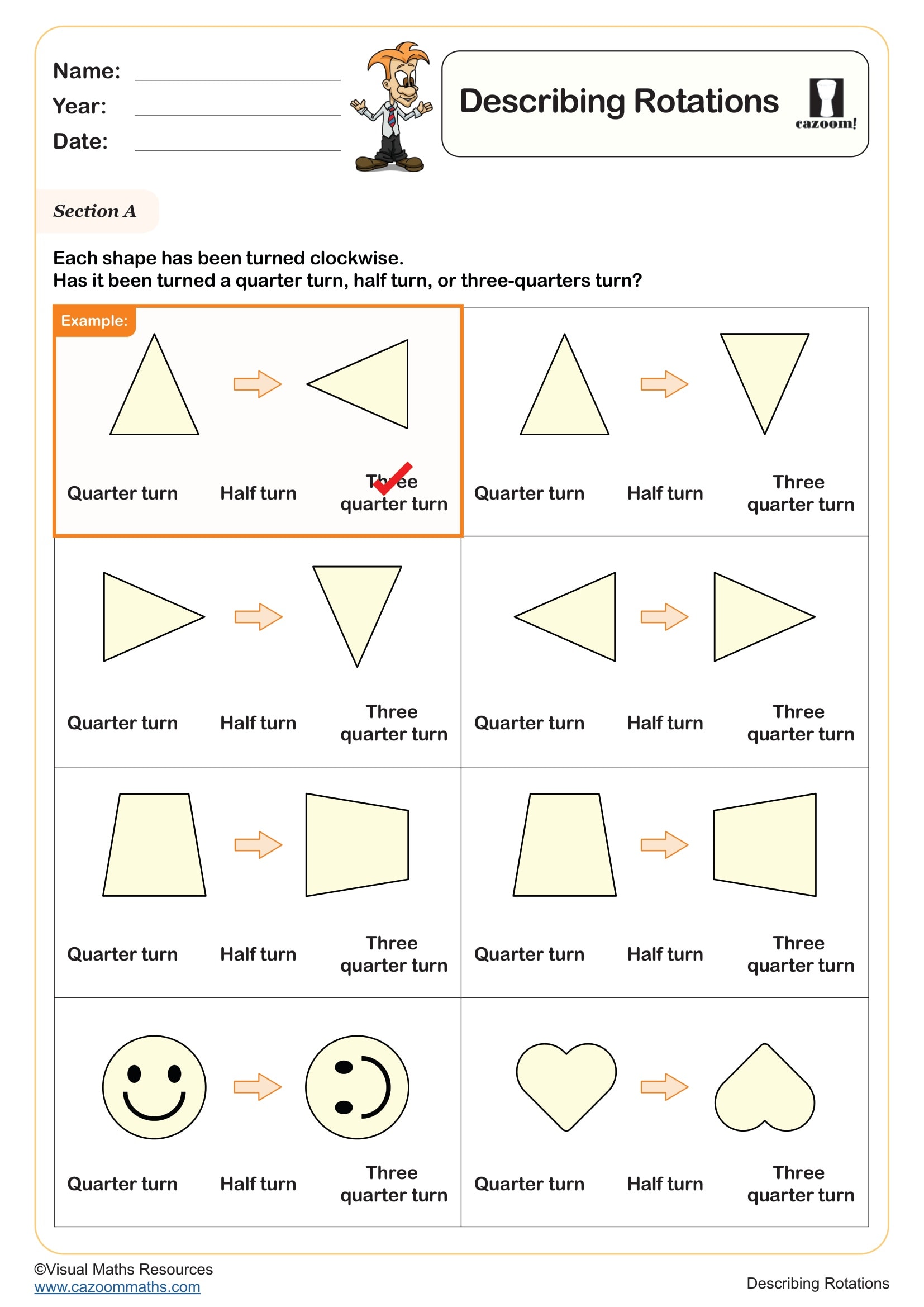Year 1 Geometry Worksheets
Printable PDF Year 1 Geometry Activities
Check out and download our year 1 geometry resources, which will improve your students’ knowledge of various geometrical calculations related to simple 2D and 3D shapes, for example- Odd One Out 3D Shapes, Describing Rotations, Describing Positions, Count up the Shapes, Describing Movement, and much more. All of our maths resources are custom-made and created in an easy-to-download and printable PDF format, and each of them includes separate answer sheets as well. All of the Cazoom Maths worksheets are expertly crafted to help your KS1 children better understand and practice basic geometry.
What is Geometry
Geometry studies shapes, sizes, positions, and properties of objects in space around us. Children learn to identify circles, squares, triangles, and rectangles in everyday items. This mathematical area develops spatial awareness and visual reasoning skills systematically. Geometry helps children understand how shapes fit together and relate to each other naturally.
• Study of shapes and space
• Identifying common shapes daily
• Developing spatial awareness skills
• Understanding shape relationships
What is included in our Year 1 Geometry Worksheets
Year 1 geometry worksheets include a wide range of concepts related to basic shapes and spatial awareness. Here are some of them-
• 2D and 3D Shape Recognition - Shape recognition worksheets help children identify and name common 2D shapes like circles, squares, triangles, and rectangles. These activities also introduce 3D shapes such as cubes, spheres, and cylinders to build foundational geometry knowledge for Year 1 learners.
• Position and Direction Work - Position and direction worksheets teach children spatial vocabulary including above, below, beside, in front, and behind concepts. These exercises help pupils understand how objects relate to each other in space and develop essential navigation skills through practical activities.
• Symmetry and Pattern Activities - Symmetry worksheets introduce children to balanced patterns and mirror images through engaging visual exercises. These activities help Year 1 pupils recognise symmetrical shapes and create their own patterns while developing artistic and mathematical skills together.
• Shape Sorting Exercises - Shape sorting activities require children to classify and group shapes based on their properties and characteristics. These hands-on exercises develop logical thinking skills and help pupils understand the differences between various geometric shapes through interactive practice.
Why Are These Resources Important
Geometry worksheets develop visual and spatial skills that children need for advanced mathematics learning. Early exposure to shapes builds foundation knowledge for future work with area and volume. These skills support problem-solving abilities and logical thinking development throughout education. Strong geometry understanding helps children navigate their physical environment more effectively.
• Develop visual spatial skills.
• Build foundation knowledge early.
• Support problem-solving abilities
• Help environmental navigation
Real Life Use of Geometry Skills
Children encounter geometry constantly in their daily environment through buildings, toys, and household items. Recognising shapes helps with puzzles, construction toys, and art activities at home and school. Understanding position words helps children follow directions and describe locations accurately. These practical applications make geometry learning meaningful and relevant for young children. From identifying road signs to arranging furniture, geometry skills support navigation and spatial reasoning in countless everyday situations.
